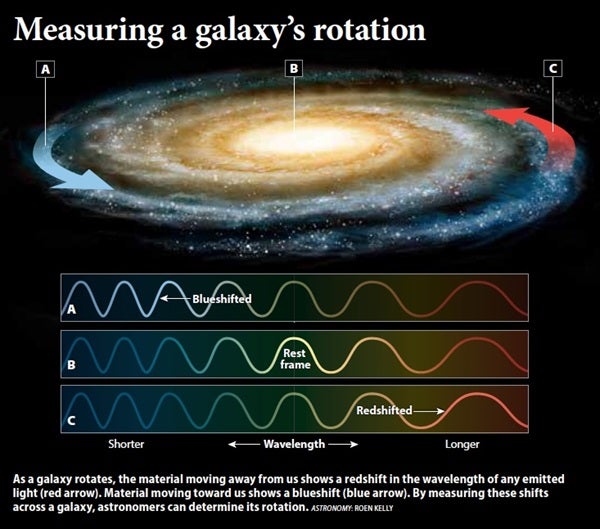One of the most famous — and prevalent — of these features is Hydrogen-alpha (or Hα), which lies at precisely 656.28 nanometers (for a non-moving source). To measure the rotational speed of a galaxy, we map out a line like Hα across the galaxy and compare it to the value from a source at rest. If we can see that on one side of the galaxy the line is blueshifted (moving toward us), and on the other redshifted (moving away) relative to the central redshift of the galaxy, we know the galaxy is rotating, and the amount of shift of either line tells us how much. It is common to do this using a long-slit spectroscope, which measures the shifts in a single spectral line across the galaxy. Alternatively, resolved spectroscopy of entire galaxies has become possible in more recent years, so now we often get full spectral maps.
Another technique uses a radio telescope to measure the 21-centimeter emission line of hydrogen, which also reveals galaxy rotation. The 21 cm line shows us where the hydrogen in a galaxy lies, and as that hydrogen either rotates toward or away from us relative to the central redshift of the galaxy, the resulting Doppler shift broadens the single emission line into a line with two peaks, each associated with motion in one direction or the other.
As you note, we must indeed take into consideration the average shift of light from the motion of our galaxy. This will almost always result in a net redshift, as it includes the expansion of the universe, and also our solar system’s motion toward or away from the galaxy we are observing (the rotation of our planet, our orbit around the Sun, the Sun’s motion around the galaxy, and the galaxy moving through the universe). These are known quantities, and any extragalactic measurements are done relative to them.










